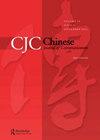Unified or divided “we-hood”: discursive constructions of heterogeneous national identities under the one country, two systems model
IF 1.9
2区 文学
Q2 COMMUNICATION
引用次数: 5
Abstract
By proposing that national identity is not stable and homogeneous, this article explores how mainland Chinese students construct a heterogeneous national identity and negotiate a unified or divided “we-hood” with both Macao locals and other mainlanders under one country, two systems model. Unified we-hood refers to an inclusive China–Chinese nationalism, while a divided we-hood is seen in how mainlanders construct the peoples of the Special Administrative Regions (SARs) as heterogeneous and internal others. This divided we-hood in the state-nationalism-building process is attributed to the outcomes of the two systems, which leads to the blurred consciousness of a mainlander identity, and who or what is Macao. To explain the complex and dynamic process of national identity construction, we further propose both top-down and bottom-up nationalist discourses, within which the frame of produced, contested, transformed, and reproduced strategies works to unpack this process.统一或分裂的“我们”:一国两制模式下异质民族认同的话语建构
通过提出国家认同不是稳定的、同质的,本文探讨了中国大陆学生如何构建异质的国家认同,并在一国两制模式下与澳门本地人和其他大陆人协商统一或分裂的“我们身份”。“统一的我们”指的是一种包容的中国-中国民族主义,而“分裂的我们”则是内地人如何将特别行政区的人民视为异质的和内部的他者。在国家民族主义建设过程中,这种分裂的身份被归因于两种制度的结果,这导致了对内地人身份的模糊认识,以及澳门是谁或什么。为了解释国家认同构建的复杂和动态过程,我们进一步提出了自上而下和自下而上的民族主义话语,在这种话语中,生产、竞争、转化和复制策略的框架可以解开这一过程。
本文章由计算机程序翻译,如有差异,请以英文原文为准。
求助全文
约1分钟内获得全文
求助全文

 求助内容:
求助内容: 应助结果提醒方式:
应助结果提醒方式:


